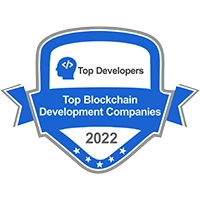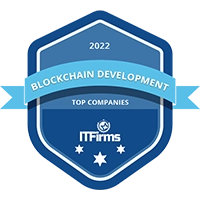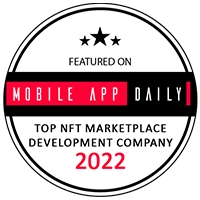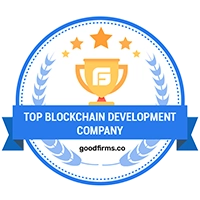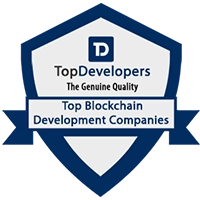Introduction to Large Language Models (LLMs)
Large Language Models (LLMs) have become a game-changer in artificial intelligence, particularly in natural language processing (NLP). These models, like GPT-4 and Google's PaLM, are capable of understanding, generating, and even translating human language with remarkable accuracy. What sets LLMs apart is their ability to process vast amounts of data, learn from context, and perform a wide range of tasks—everything from answering questions to creating content. In 2024, LLMs are not just limited to text; they are increasingly being used in multimodal applications that handle images and other data types, making them a versatile tool for industries like healthcare, finance, and e-commerce. With continuous advancements, LLMs are pushing the boundaries of AI, helping businesses innovate and operate more efficiently.
How Large Language Models Work
Understanding the Transformer Backbone: The Power Behind LLMs
The key technology behind most large language models is the transformer architecture. Transformers enable LLMs to process language by breaking down text into smaller units called tokens. Unlike traditional models, transformers can handle entire sequences of text simultaneously, making them efficient and powerful. They use an encoder-decoder structure, where the encoder analyzes the input and the decoder generates the output. This architecture allows transformers to excel at tasks like translation, text generation, and summarization, making them the foundation of most modern LLMs.
Tokens, Attention Mechanisms, and Context: How LLMs Understand Language
Tokens are the building blocks LLMs use to process text, with each word or phrase being converted into a token. Attention mechanisms within transformers help the model focus on important parts of the text, giving weight to certain tokens while ignoring irrelevant ones. This mechanism allows LLMs to understand context, which is crucial for generating accurate and coherent responses. By analyzing relationships between tokens, the model can determine which parts of a sentence are most relevant to the task at hand, such as predicting the next word or understanding user intent.
Training vs. Fine-tuning: Preparing LLMs for Specific Tasks
Training a large language model involves feeding it vast amounts of data so that it can learn general language patterns. This stage is crucial for making the model versatile, but it's not enough for specialized tasks. That's where fine-tuning comes in. Fine-tuning takes a pre-trained model and further adjusts it using task-specific data. For example, a general-purpose LLM might be fine-tuned to perform well in healthcare by exposing it to medical literature. This additional step enhances the model's accuracy and relevance for specific applications.
The Role of Self-Attention in Language Modeling: Learning from Data Patterns
Self-attention is one of the most important features of modern LLMs, enabling them to understand the relationships between different words in a sentence. In a self-attention mechanism, the model evaluates each word's importance in relation to all other words, ensuring that it captures the full context. This mechanism allows LLMs to excel in tasks requiring comprehension of long and complex text sequences. It enables the model to assign different levels of importance to different parts of the input, helping it generate more accurate predictions and responses based on the data it has seen.
Types of Large Language Models
Zero-Shot, Few-Shot, and Fine-Tuned Models: What's the Difference?
When it comes to large language models (LLMs), understanding the different types can help you determine which model suits your needs. Zero-shot models are pre-trained on large datasets and can handle tasks they haven't specifically been trained for. This makes them flexible for general applications, but the results may not always be perfect. Few-shot models, on the other hand, are exposed to a few examples of a task before they generate responses, allowing them to refine their accuracy. Lastly, fine-tuned models are tailored for specific tasks through additional training on specialized datasets. These models are highly accurate for targeted applications like legal or medical language tasks.
Generic LLMs vs. Domain-Specific LLMs: When Size Meets Purpose
Not all LLMs are built for the same purpose. Generic LLMs are trained on broad datasets from a wide range of domains. Think of them as all-rounders capable of performing various tasks like translation, text generation, or summarization. They're ideal for general use cases but might lack depth in specialized areas. Domain-specific LLMs, on the other hand, are fine-tuned for particular industries or tasks. For example, models like BloombergGPT are trained specifically for financial tasks, while OpenAI's Codex is tuned for code generation. The difference lies in their specialization: domain-specific models offer more accuracy and reliability in niche applications, whereas generic models provide versatility across multiple fields.
Multimodal LLMs: Expanding Beyond Text to Images and More
Traditional LLMs focus solely on processing text, but multimodal LLMs take things a step further by handling different types of data, such as images, video, and audio, in addition to text. For instance, GPT-4 can process text and images, allowing it to analyze a wider range of inputs and generate more contextually rich outputs. This capability expands the potential applications for LLMs, making them useful not only for text-based tasks like chatbots or translation but also for more complex tasks like image captioning or video summarization. As multimodal models evolve, they are bridging the gap between language understanding and broader AI capabilities.
Looking to Develop Your Own Large Language Model?
Contact UsKey Components of Large Language Models
Neural Networks: The Brain Behind LLMs
At the core of every large language model is a neural network, which serves as the computational engine responsible for processing data. Neural networks consist of layers of interconnected nodes that work together to analyze inputs and generate outputs. Each node processes a small part of the input, and through repeated iterations, the network learns complex patterns in the data. In the case of LLMs, these networks are designed to understand language by identifying relationships between words, sentences, and even larger text structures. Neural networks enable LLMs to perform tasks like answering questions, translating text, and generating coherent language responses.
Embeddings and Contextual Understanding: Making Sense of Words
In order to understand language, LLMs rely on embeddings, which are dense vector representations of words and phrases. These embeddings capture both the meaning and the context of words, allowing the model to differentiate between similar terms based on their usage. For example, the word "bank" could mean a financial institution or the edge of a river, and embeddings help the model figure out which meaning applies based on the surrounding text. This contextual understanding is essential for generating accurate and meaningful responses, particularly in tasks like text summarization or sentiment analysis, where the model must interpret the intent behind the words.
Attention Layers: How LLMs Focus on the Right Information
LLMs use attention layers to identify the most relevant parts of an input sequence. Rather than treating all words in a sentence equally, the attention mechanism allows the model to focus on specific words or phrases that are critical for generating an accurate response. For instance, in a question-answering task, the model will give more weight to the words in the question and the relevant parts of a text passage when producing an answer. This ability to "attend" to the most important parts of the input helps LLMs improve their accuracy and efficiency, especially when dealing with long or complex texts.
Transformer Models: The Foundation of Modern LLMs
Modern large language models are built on the transformer architecture, which revolutionized the field of natural language processing. Unlike previous models that processed text sequentially, transformers analyze entire sequences of text at once, using a self-attention mechanism to understand relationships between words. This parallel processing makes transformers highly efficient and capable of handling large datasets with speed and accuracy. Transformers are the foundation of LLMs like GPT, BERT, and PaLM, enabling them to excel in a wide range of tasks, from translation and summarization to creative text generation. Their versatility and efficiency have made transformers the standard architecture for most advanced language models today.
Popular Large Language Models in 2024
GPT-4: The Leader in Text Generation
GPT-4 remains a dominant force in the world of large language models in 2024. Developed by OpenAI, it excels at generating human-like text and performing a wide range of natural language processing (NLP) tasks, from answering questions to writing detailed content. With billions of parameters, GPT-4 can handle complex queries, understand nuanced language, and generate coherent and relevant text across various industries. Its flexibility and performance make it a go-to model for applications like chatbots, content generation, and even code writing.
Google's PaLM and BERT: Powerful Alternatives in the LLM World
Google offers two strong competitors in the LLM space: PaLM and BERT. PaLM (Pathways Language Model) is known for its high performance in understanding natural language, reasoning tasks, and arithmetic. It's designed for real-world applications like language translation and summarization. BERT (Bidirectional Encoder Representations from Transformers), on the other hand, is a transformer-based model focused on understanding the context of words in relation to each other. BERT's ability to process text bidirectionally makes it highly accurate for tasks like question-answering and sentiment analysis.
Meta's LLaMA 2: Lightweight and Efficient
Meta's LLaMA 2 is designed for efficiency, offering high performance with fewer parameters than models like GPT-4. It's lightweight, making it easier to deploy in real-world applications while maintaining accuracy for text-based tasks.
Other Notable LLMs: Cohere, Claude, and More
Apart from the big names, models like Cohere and Claude have made strides in 2024. Cohere is optimized for text generation and classification, while Claude focuses on improving AI-driven conversations. Both provide strong alternatives for businesses looking to integrate LLMs into their systems without relying solely on industry giants.
Top Use Cases of Large Language Models in 2024
AI-Powered Search Engines: Information Retrieval at Scale
In 2024, large language models are transforming search engines. LLMs power advanced search capabilities, making information retrieval more efficient and accurate. These models understand the context of queries, enabling them to deliver highly relevant results. Whether it's finding answers to specific questions or retrieving vast amounts of data from the web, AI-powered search engines leverage LLMs to enhance the user experience by providing smarter, more targeted responses.
Sentiment Analysis: Understanding Emotions in Text
LLMs are widely used in sentiment analysis, helping businesses understand customer emotions based on textual data. By analyzing customer reviews, social media posts, and feedback, LLMs can determine whether the sentiment is positive, negative, or neutral. This capability allows companies to track brand perception, improve customer service, and tailor marketing strategies based on emotional cues.
Code Generation: Writing Software with LLMs
Large language models like GPT-4 are revolutionizing code generation. These models can understand programming languages, generate code snippets, and even debug existing code. Developers can use LLMs to speed up the coding process, automate repetitive tasks, and receive real-time assistance with complex coding problems.
Conversational AI and Chatbots: Revolutionizing Customer Interactions
In the realm of conversational AI, LLMs are powering chatbots and virtual assistants that handle customer interactions efficiently. These models understand user queries, provide contextually relevant responses, and adapt to conversations, making customer support and service more seamless.
Text Summarization and Content Creation: Automating Language Tasks
LLMs are also used for text summarization and content creation, automating tasks like generating reports, creating articles, and summarizing lengthy documents. Businesses leverage this capability to save time and streamline operations, allowing teams to focus on higher-level tasks while LLMs handle content automation.
Key Benefits of Large Language Models
- Versatility: LLMs can handle various tasks such as translation, summarization, and text generation across industries.
- Scalability: They can process vast amounts of data quickly, making them suitable for large-scale applications like search engines and content creation.
- Contextual Understanding: LLMs analyze the context of text, improving the accuracy of responses and content generation.
- Automation: They automate repetitive tasks such as code writing, report generation, and customer queries, saving time and resources.
- Efficiency: LLMs boost productivity by reducing the time it takes to complete tasks like data analysis or content creation.
- Real-Time Assistance: They provide real-time help in coding, customer service, and decision-making processes.
- Enhanced Customer Experience: Through conversational AI, LLMs offer personalized and responsive interactions.
- Language Flexibility: LLMs support multiple languages, making them valuable for global businesses.
- Continuous Improvement: With ongoing training, LLMs improve their performance as they learn from more data.
Want to Build Custom LLM Solutions for Your Industry?
Reach Out TodayHow to Train and Deploy Your Own Large Language Model
Gathering Massive Datasets: The Backbone of LLM Success
The foundation of any large language model (LLM) is data. To train a successful LLM, you need a vast and diverse dataset. This typically includes text from various sources such as websites, books, research papers, and more. The larger and more diverse the dataset, the better the model's ability to understand context, handle different languages, and perform a variety of tasks. Ensuring high-quality and unbiased data is essential to minimize errors and biases in the model's outputs.
Choosing the Right Architecture: Transformer vs. Other Models
When it comes to architecture, the transformer model is the current standard for building LLMs due to its efficiency and scalability. Transformers excel in handling long text sequences and learning context through self-attention mechanisms. However, depending on your application, other architectures, like RNNs (Recurrent Neural Networks), may be considered. That said, transformers offer the best performance for most modern NLP tasks, making them the go-to choice for training large language models.
Fine-Tuning for Specific Tasks: Making an LLM Industry-Ready
Training a general LLM is just the first step. To make it applicable for industry-specific tasks, fine-tuning is crucial. Fine-tuning involves further training the model on domain-specific data to tailor it for specific tasks like medical diagnoses, legal document review, or customer service automation. This additional step ensures that the LLM not only understands general language but can also perform accurately in specialized contexts.
Deployment at Scale: How to Use LLMs in Real-World Applications
Once the LLM is trained and fine-tuned, deploying it at scale involves integrating it into real-world applications. This can be done through cloud platforms, on-premise solutions, or hybrid environments depending on the use case. Scalability is key during deployment, as the model must be able to handle multiple requests and process large amounts of data efficiently. Techniques like model optimization and hardware acceleration can help improve performance during large-scale deployments, ensuring your LLM operates seamlessly in production environments.
Getting Started with LLMs: Practical Resources and Tools
Open-Source LLMs to Explore: From GPT-4 to Google's PaLM
If you're looking to experiment with or implement large language models (LLMs), there are several open-source options available. GPT-4 from OpenAI is one of the most powerful models, known for its high-quality text generation across a variety of applications. Google's PaLM is another advanced model, designed for tasks like language translation, summarization, and complex reasoning. You can also explore BERT, a popular model for natural language understanding, and Meta's LLaMA 2, which is optimized for efficiency. These models offer flexibility and allow developers to build custom applications without starting from scratch.
Tools for Training and Deploying Your Own LLM
Once you've selected an open-source LLM, the next step is training and deployment. Platforms like Hugging Face and TensorFlow provide comprehensive tools for training your LLM on specific datasets, making customization easier. Google Cloud AI and AWS SageMaker offer scalable solutions for deploying LLMs, ensuring your model can handle real-world applications efficiently. These platforms come with pre-built frameworks and APIs, reducing the time and effort required to integrate LLMs into your existing systems. Whether you're building a chatbot or automating content generation, these tools simplify the process.
Where to Learn More: Courses, Research, and Community Support
Learning about LLMs is easier with the right resources. Online courses on platforms like Coursera and Udemy offer structured lessons on building and fine-tuning LLMs, while GitHub provides access to a wealth of open-source projects for hands-on learning. Engaging with the Hugging Face and OpenAI communities can provide you with support, real-world examples, and the latest updates on model developments. For deeper research, academic papers available through platforms like arXiv give insights into the cutting-edge advancements in LLM technology. With these resources, you can keep up with the fast-evolving world of LLMs and apply your knowledge to real-world applications.
Why Choose Appdupe for Developing Your LLM Model?
Appdupe offers comprehensive services to help businesses develop and deploy custom Large Language Models (LLMs) that cater to their specific needs. Whether you need an LLM for customer service, content creation, or industry-specific applications, Appdupe provides end-to-end support. From gathering and curating massive datasets to fine-tuning models for specialized tasks, Appdupe ensures that your LLM is optimized for accuracy and performance. With a deep understanding of transformer architectures and cutting-edge tools, Appdupe helps you integrate LLMs seamlessly into your existing workflows. By partnering with Appdupe, you can accelerate development, reduce operational costs, and gain a competitive edge in leveraging AI-driven solutions.
Conclusion
Large language models are transforming the way we work, communicate, and innovate. As they continue to evolve, businesses have the opportunity to harness their immense power for everything from automating routine tasks to enhancing customer experiences. By understanding how to train, fine-tune, and deploy LLMs effectively, you can unlock new efficiencies and drive growth across industries. Whether you're looking to reduce operational costs, improve decision-making, or develop cutting-edge AI applications, the possibilities with LLMs are nearly limitless. Embracing LLM technology today means staying ahead of the curve in the rapidly advancing AI landscape.


